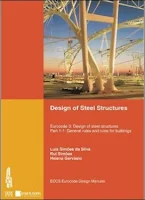 K. H. Head ...
K. H. Head ... This volume, the first in a set of three, is a vital working manual that covers the basic tests for the classification and compaction characteristics of engineering soils. It will therefore be an essential practical handbook for all engaged on the testing of soils in a laboratory for building and civil engineering purposes. Based on the author's experience over many years managing large soil testing laboratories, the book places emphasis on ensuring that procedures are fully understood. Each test procedure is broken down into simple stages, describing each step in detail. The use of flow diagrams and the setting out of test data and calculations will be of great benefit, especially for the newcomer to soil testing. The book contains many numerical examples, which illustrate the methods of calculation and graphical presentations of typical results. It also includes vital information on good techniques, laboratory safety, the calibration of measuring instruments, essential checks on equipment, and laboratory accreditation. Volume 1: Soil Classification and Compaction Tests is an essential working manual for all those involved in geotechnical laboratory testing. The book assumes a basic knowledge of mathematics, physics and chemistry, though it explains some of the fundamental principles that are essential in soil testing where appropriate.
Info-Details: 416 pages - Publisher: Whittles Publishing; 3rd edition (September, 2006) ... Language: English - ISBN-10: 1420044672 - ISBN-13: 978-1420044676 ...
This volume provides a comprehensive working manual for the laboratory testing of soils for civil engineers. It is an essential practical handbook for all who are engaged in laboratory testing of soils as well as being of great value to professional engineers, consultants, academics and students in geotechnical engineering. Revised and updated, the contents reflect current practice in standard laboratory test procedures for determining some of the important engineering properties of soils. The authors have had many years experience in managing large soil testing laboratories since the early 1950s through to the present day, whilst actively contributing to the development of geotechnical testing through training courses, lectures, committees and working groups. They recognise that it is particularly important for test methods to be fully understood and a step-by-step approach has therefore been used in presenting each section.

The test procedures comprise the measurement of soil permeability, CBR value, drained and undrained shear strength, and consolidation characteristics. Additional material in this new edition includes the Fall cone procedure for measurement of shear strength in clays based on the European Technical Specification, a simplified direct approach and a useful arrangement for applying pressures in multistage triaxial tests to meet the requirements of BS1377. The latest requirements for calibration of equipment and measuring devices are presented and discussed, together with the significance of quality assurance based on recognised laboratory accreditation to ISO/IEC 17025. Descriptions of test methods are complemented by many numerical examples in order to illustrate the methods for recording test data, making calculations, presenting graphical plots and deriving test results. Fundamental principles are explained, where appropriate, so that the operator can have a better understanding of the significance of the tests and guidance is given where experience has shown that difficulties may be encountered. The importance of good techniques, essential checks on test equipment and laboratory safety are all emphasised.
Info-Details: 480 pages - Publisher: Whittles Publishing; 3rd edition (September, 2011) ... Language: English - ISBN-10: 143986988X - ISBN-13: 978-1439869888 ...
This volume provides a comprehensive working manual for the laboratory testing of soils for civil engineers. It is an essential practical handbook for all who are engaged in laboratory testing of soils as well as being of great value to professional engineers, consultants, academics and students in geotechnical engineering. Revised and updated, the contents reflect current practice in standard laboratory test procedures for determining some of the important engineering properties of soils. The authors have had many years experience in managing large soil testing laboratories since the early 1950s through to the present day, whilst actively contributing to the development of geotechnical testing through training courses, lectures, committees and working groups. They recognise that it is particularly important for test methods to be fully understood and a step-by-step approach has therefore been used in presenting each section.

The test procedures comprise the measurement of soil permeability, CBR value, drained and undrained shear strength, and consolidation characteristics. Additional material in this new edition includes the Fall cone procedure for measurement of shear strength in clays based on the European Technical Specification, a simplified direct approach and a useful arrangement for applying pressures in multistage triaxial tests to meet the requirements of BS1377. The latest requirements for calibration of equipment and measuring devices are presented and discussed, together with the significance of quality assurance based on recognised laboratory accreditation to ISO/IEC 17025. Descriptions of test methods are complemented by many numerical examples in order to illustrate the methods for recording test data, making calculations, presenting graphical plots and deriving test results. Fundamental principles are explained, where appropriate, so that the operator can have a better understanding of the significance of the tests and guidance is given where experience has shown that difficulties may be encountered. The importance of good techniques, essential checks on test equipment and laboratory safety are all emphasised.
Info-Details: 416 pages - Publisher: Whittles Publishing; 3rd edition (September, 2014) ... Language: English - ISBN-10: 1482227967 - ISBN-13: 978-1482227963 ... 






